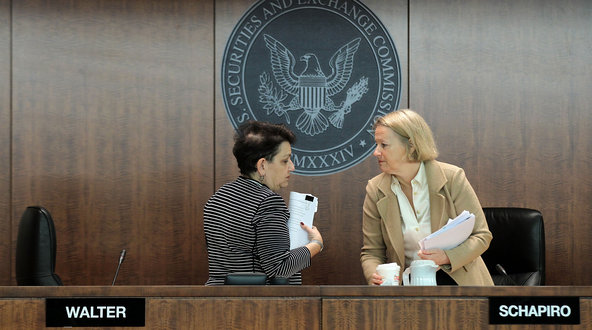The Dow slipped and the Standard Poor’s 500-stock index edged up less than a point on Wednesday, interrupting a four-day rally as investors tried to gauge when the Federal Reserve might scale back its economic stimulus.
Minutes from the Fed’s June policy meeting, which were released on Wednesday afternoon, showed that some members of the governing board wanted more reassurance that the labor market was improving before reining in stimulus measures. Even so, consensus built within the Fed that there probably was a need to begin pulling back soon on its monthly bond buying.
The three major stock indexes recovered some ground immediately after the release of the minutes. But those gains were short-lived as investors parsed the details of the minutes.
The Dow Jones industrial average dipped 8.68 points, or 0.06 percent, to end at 15,291.66. The S. P. 500 index inched up just 0.30 of a point, or 0.02 percent, to finish at 1,652.62. The Nasdaq composite index gained 16.50 points, or 0.47 percent, to close at 3,520.76.
Investors appeared to be more encouraged by a speech from the Fed chairman, Ben S. Bernanke, that was delivered after the market closed. Mr. Bernanke said highly accommodative monetary policy was needed for the foreseeable future and that the unemployment rate at 7.6 percent may be overstating the job market’s health.
His comments sent stock index futures higher. The central bank has said it will continue buying bonds until the labor market outlook improves substantially.
“That is calming market fears,” said Tim Ghriskey, chief investment officer of Solaris Group in Bedford Hills, N.Y., referring to Mr. Bernanke’s comments. “Speculation that the tapering could be from September is now turning into, ‘Maybe the Fed is going stay longer.’ ”
Mr. Bernanke spooked investors last month when he said the economy’s expansion was strong enough for the central bank to start slowing the pace this year of its monthly purchases of $85 billion in bonds, known as quantitative easing.
Some in the market have pegged September as time when the Fed could start pulling back, but the minutes suggested that was not a foregone conclusion.
The S. P. 500 has risen more than 2 percent over the last five sessions, nearing its high of 1,669.16, reached May 21.
Analysts expect earnings at S. P. 500 companies to grow 2.6 percent in the second quarter from a year ago, while revenue is forecast to increase 1.5 percent, Thomson Reuters data shows.
In government bonds, the benchmark 10-year Treasury note fell 9/32 to 92 2/32, sending the yield up to 2.67 percent, from 2.64 percent late Tuesday.

Article source: http://www.nytimes.com/2013/07/11/business/daily-stock-market-activity.html?partner=rss&emc=rss
